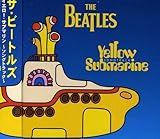Conferences and Conversations
I spend a lot of time at conferences. Last week I attended and spoke at the SD West conference in Santa Clara and the Under the Radar Office 2.0 conference in Mountain View.
Earlier this week I was at the SD Forum Platforms 2.0 conference, which was also in Santa Clara.
After attending, speaking at, and observing dozens of conferences every year for many, many years, I’ve noticed that some speakers see the conference as an opportunity to deliver their message, and nothing more. I think that’s a bit short-sighted and that the speakers are missing out on some amazing opportunities to interact and to learn.
Stereotyping wildly, I tend to see two very distinct types of corporate speakers at these conferences.
The first type of speaker does what we could call a “hit and run” presentation. They show up minutes before their session, hastily don a microphone and set up their laptop, deliver their message and then beat a hasty retreat to what is apparently their real job. They contribute some content to the conference but don’t really participate. Their presentations are given in isolation, without references to what other speakers have said and without paying attention to the overall theme or spirit of the day. Taken to the extreme this behavior can actually be seen as disrespectful to the audience — speakers who haven’t taken the time to sync themselves with the context and flow of the conference can end up repeating what other people have said, and they miss opportunities to compare and contrast their offering in light of what’s already been said.
 The second type of speaker tries to spend the entire day at the conference. They arrive early and the stay late. They deliver their message, and then stick around in order to be part of the conference and of any sidebar or hallway conversation that might be inspired by their talk. They can refer back to earlier speakers for context. They can be part of the underground running jokes that can make a conference a whole lot more fun and personal. At an Applied XML conference a few years ago, one of the first speakers built his presentation around submarines (he was from a defense contractor). The second speaker quickly modified his presentation to add a few subtle submarine references. By the end of the conference, including a submarine reference in your presentation was more or less mandatory. I referenced all sorts of submarine-related products in the Amazon catalog, including the Beatles Yellow Submarine. Yes it was silly, but it was fun, and each speaker showed that they were clued in to the informal conference theme by adapting on the fly. Hit and run speakers don’t do this.
The second type of speaker tries to spend the entire day at the conference. They arrive early and the stay late. They deliver their message, and then stick around in order to be part of the conference and of any sidebar or hallway conversation that might be inspired by their talk. They can refer back to earlier speakers for context. They can be part of the underground running jokes that can make a conference a whole lot more fun and personal. At an Applied XML conference a few years ago, one of the first speakers built his presentation around submarines (he was from a defense contractor). The second speaker quickly modified his presentation to add a few subtle submarine references. By the end of the conference, including a submarine reference in your presentation was more or less mandatory. I referenced all sorts of submarine-related products in the Amazon catalog, including the Beatles Yellow Submarine. Yes it was silly, but it was fun, and each speaker showed that they were clued in to the informal conference theme by adapting on the fly. Hit and run speakers don’t do this.
I’m way too polite to name names, but I will say that large corporations seem to be especially good at sending hit and run speakers. They fly in like pigeons, leave their offerings, and depart. It is their loss — they are missng out on golden opportunities to hear from current and future customers.
What I have come to realize is that the speaker’s talk itself is merely a fire or conversation starter. A good talk will create all sorts of immediate opportunities for followup. While reading this provocative entry, which I found in a comment thread on Newspapergrl’s blog, I realized that a good conference talk is like a good blog post — it starts the conversation and draws people in to leave worthwhile comments. Ultimately the volume of the comments overwhelms the original post.
I like the second mode of operation a whole lot better. Broadcasting your message is certainly useful, but the speakers who routinely operate in this way are really missing out on a lot. I tell people that my job is supposedly to go out and to deliver our message (and I do that all the time), but that it really is all about getting conversations started. And that’s a good thing.